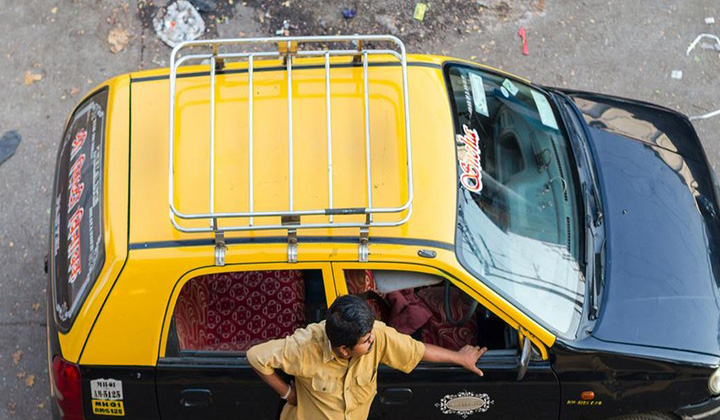Trending Now
- “I will soon make an announcement regarding a statewide tour across Tamil Nadu.” – O. Panneerselvam.
- Vatsala, Asia’s oldest elephant, has passed away at Panna Tiger Reserve; social activists mourn the death of this elephant, which lived for over 100 years.
- “The U.S. Govt earned ₹8 lakh crore this year through increased tariffs on foreign goods.” – U.S President Donald Trump.
- World No.1 Aryna Sabalenka has advanced to the semifinals in the Women’s Singles category at Wimbledon Tennis.
Columns
How black and yellow cabs in Delhi and Mumbai are trying to beat Uber and Ola at their own game
![]() August 9, 2016
August 9, 2016
Conventional operators are moving to apps, offering discounts and upgrading their vehicles to counter competition from new taxi services.
The rise of Ola and Uber has changed the way urban India travels. After years of being at the mercy of capricious autorickshaw drivers and expensive taxis, the convenience of being able to call a cab at any time of the day or night without burning a hole in the pocket has made app-based transport services hugely popular.
No wonder then that auto-rickshaw and taxi drivers, who must battle these aggregator behemoths for customers and revenue, aren’t pleased.
Last month, more than 90,000 auto-rickshaws and 15,000 yellow top taxis went on strike in Delhi, claiming that services like Ola and Uber were hurting their livelihoods. The strike was called off in three days, after the Delhi government promised to address their grievances.
In Mumbai, weeks before the Delhi strike, several of the city’s ubiquitous black and yellow cabs had refused to ply too. The striking drivers claimed while their fares were fixed by the authorities, cab aggregators were offering cheaper rates, as a result of which they were fighting to survive in an uneven playing field.
Innovation is the name of the game
While taxi aggregators, fuelled by global venture funds, are on a discounting overdrive to expand market share, conventional cabs are trying hard to push back, not just with strikes and protests – – but with innovation and technology.
In Kolkata, for instance, the Bengal Taxi Association is developing an app that will enable customers to hail the city’s ubiquitous yellow taxis using their smartphones. The association plans to bring all 30,000-odd taxis that operate in and around Kolkata under this app, starting with 500 taxis in the first phase. Law enforcement agencies have already given the proposal a no-objection certificate.
The app will provide customers with details of cab drivers and will be equipped with GPS-enabled location tracking as well as a panic button to ensure the safety of passengers.
However, moving to app-based operations could mean higher fares for commuters as the taxi association in Kolkata has pushed for a 15% hike in the existing fare of Rs 25 for the first 2 km and Rs 12.5 for each kilometre travelled thereafter.
Moving to apps
In Mumbai too, two taxi associations have come together to take on the might of Uber and Ola by launching the 9211 app that allows customers to book black and yellow taxis using their smartphones. The app, launched in January, also gives customers the option of calling for a cab through a call centre. It charges government-approved fares starting at Rs 22 for the first 1.6 kms. At present, its customers can only pay in cash as the app doesn’t offer an online payment facility.
Cab drivers who want to be hooked into this app network will have to sign up and agree to police verification.
Last week, a group of 250 cabbies went one step further to lure customers by offering a 20% discount on the fare if they were booked through the 9211 service. The catch was that the discount was only available for cabs booked in Bandra or the Bandra-Kurla Complex. A representative of 9211 said that the aggregator was willing to let go of its commission (that partly enabled the discount) to expand its customer base.
Battle for customers
All this comes even as Uber has attempted to woo drivers of black and yellow cabs in Mumbai with a scheme called “Mi Pan Malak (I am also an owner)” in which it highlights how its drivers own the vehicles they operate (a large number of black and yellow cab drivers in the city rent their taxis from owners).
In an attempt to regain lost market-share, conventional cab owners are also upgrading. The once ubiquitous Fiat is now being replaced by hatchbacks that actually have suspension and efficient air conditioners. Some have even introduced an SOS button inside the cab for the safety of their customers, especially women. For more revenue, taxi-owners are also accepting display advertising.
Mumbai also has Apna Cabs, which is attempting to aggregate black and yellow taxis in the financial capital. It claims to have signed up more than 1,600 cabs already and plans to expand to cities like Delhi, Bengaluru, Hyderabad and Pune soon.
Putting up a fight
In Delhi, the government has been pushing its own app called PoochO which allows people to call autos and taxis at the press of a button on their phones.
Launched last year during the odd-even scheme, the government – which is under severe pressure from unions to regulate cab aggregators, and ban surge pricing in April – is pushing drivers to register through advertisement campaigns.
In Karnataka, the state government brought out a detailed taxi-app policy to regulate players like Ola and Uber, which also includes a price ceiling.
Auto aggregator Jugnoo, meanwhile, has surpassed Ola in the number of autos listed on its platform. Launched in 25 cities including Ahmedabad and Indore, the auto-aggregator is facilitating an average of 3,000 rides a day in these markets. It has more than 2.8 million downloads and claims that it is 45% cheaper than Ola.






















